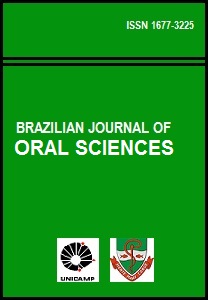Abstract
Several studies have shown that compromised bonding to bleached enamel can be reversed with antioxidants. Aim: The aim of this study was investigate the effect of the antioxidant treatment on the micro-shear bond strength of a composite resin with a clinically acceptable antioxidant usage time taken into account. Methods: Using in vitro techniques, the effect of the antioxidant sodium ascorbate (SA) was evaluated on the micro-shear bond strength of a hybrid composite resin (Tetric® A2 Ivoclar Vivadent) to dentin, which was bleached with 35% carbamide peroxide (Opalescence Quick, Ultradent Products Inc). Thirty-five intact flat buccal dentin surfaces from bovine incisors were randomly assigned to five groups which were subjected to the following treatment protocols: group 1, bleached for 45 min and bonded immediately afterwards; groups 2 and 3, bleached and then treated with 10% SA for 10 and 5 min before bonding, respectively; group 4, stored in distilled water for seven days after bleaching and before bonding; group 5, received no bleaching or antioxidant treatment. After the bonding procedure, specimens were subjected to a micro-shear bonding test. Data were analyzed by ANOVA and a post-hoc Tukey’s test. Results: One-way ANOVA revealed significant differences in bond strength among the five groups. Conclusions: It was found that the shear bond strength was reduced by carbamide peroxide bleaching, and that the antioxidant SA was ineffective at reversing the composite strength at the concentrations and treatment times examined.The Brazilian Journal of Oral Sciences uses the Creative Commons license (CC), thus preserving the integrity of the articles in an open access environment.
Downloads
Download data is not yet available.

